TechArt Pro Leica M to Sony E – Autofocus Adapter – User Review
Disclaimer:
We would like to start a tradition of user reviews on VBL site.
This is one of the first user reviews published here and we are happy that it comes from a great person and very experienced photographer. If you are interested on publishing your review of photographic equipment – lenses, cameras, accessories, post processing tutorials, camera settings and photography in general, please send us a email about your idea. We are always looking forward to bring more quality content to the photo community.
Review By Mordechai Berger (mordiberger@gmail.com)
The TechArt Pro is an innovative if somewhat quirky product that popped onto the Sony mirrorless scene almost a year ago. It was designed to autofocus Leica M mount rangefinder lenses on Sony A7II, A7RII and A6300 and A6500 cameras that offer phase detection autofocus (PDAF). It doesn’t work on the A7 or A7R.
The principle behind the product is simple: intercept the PDAF focus commands from the sensor/electronics, and use them to drive a focus motor in an M to E adapter. The lenses are set at infinity, and the adapter motor extends or retracts the adapter mount in response to focus commands.
Electronics within the TechArt Pro are programmed with specially-chosen camera f-stop setting for purposes of informing the EXIF of the focal length of the lens attached – a smart strategy since the camera and TechArt can’t receive – and can’t transmit – aperture settings to or from a manual M mount lens.
Summary:
This is an impressive accessory that – within limits – performs pretty much as advertised.
- With firmware update 4.0, TechArt focus is as precise as any FE lens I’ve tested, but it cannot do Eye AF, and it will not allow the in-camera panorama function designed into Sony mirrorless cameras. When the green ball lights in the lower corner of the EVF, and one or more phase-detection boxes appear on the subject, the lens IS in focus.
- Because of the focusing principle employed, TechArt focus speed depends on the focal length of the lens (short focal lengths focus faster than longer ones). With a 15mm Voigtlander Series III, focus is almost instantaneous. Full travel from infinity to closest focus with a 90mm could take several seconds (which can be dramatically reduced by roughly prefocusing the lens with its engraved zone-focus scale).
- The TechArt adapter has no impact on the optical characteristics of attached lenses, because it introduces no glass between the lens and the sensor. However, I cannot vouch for its performance on prime lenses that depend on moving elements to correct for optical issues (I don’t own any).
- The latest 4.0 firmware measurably improved focus speed, and virtually (but not completely) eliminated occasional blackouts when you half-pressed the shutter release to focus and shoot.
- There is a small but observable battery drain even when the camera is switched off.
- The 4.5mm travel of the TechArt effectively acts like a helical close-focus adapter. And so, a 35mm f1.4 pre-aspheric Summilux-M with a one-meter close focusing limit will focus down to about 20 cm.
- You probably need to purchase the “Leicaist” Canon FD-to-M and Nikon F-to-M adapters from TechArt to use those lenses on the TechArt Pro. The dumb adapters commonly available to convert FD and Nikon lenses to M mount don’t, without modification to the TechArt motor cover or the dumb adapter, allow you to adapt lenses other than M mounts. LTM (Leica Thread Mount) lenses seem to work well with standard thin LTM-to-M adapters.
- Conclusion: No reason to rush out and buy the TechArt if you don’t already own a couple of M or adaptable manual-focus lenses. But if you do, at less than $400 this is a worthy addition that will tempt you away from native E mounts, simply to more easily tap the lovely characteristics of these older lenses. And with those special TechArt Canon FD to M and Nikon F to M adapters, you can adapt those lenses for autofocus, too.
Purchase background
I bought the TechArt Pro because, more than 30 years ago, I acquired a Leica M4P, a 50mm f2 Summicron-M, and then, perusing the back streets of Frankfurt and Copenhagen, a used 35mm f1.4 Summilux-M and a used 90mm f2.8 Tele-Elmarit-M. This compact travel kit went all over Europe and Asia with me.
For most of my medical business photography, however, I depended on a series of Canon FD cameras and lenses. All that great glass just collected dust for the past 20-plus years as first AF and then digital orphaned the FD lenses. The high price and poor performance of the Leica M8 and M9 proved resistible. After 10 years shooting medical business stills and video with Nikon, the advent of Sony mirrorless – and its great image peaking/magnification features – led me to adapt that film-era glass to the Sony A7 and A7II with dumb adapters.
Hence – when word leaked that TechArt had developed an AF adapter for M mount lenses – and more – I was one of thousands who were immediately interested.
I quickly realized that the Chinese team of engineers who developed the TechArt Pro was completely unprepared for the deluge of interest their creation stimulated. They clearly underestimated how many digital photographers shooting with the relatively small number of Sony A7II and A7RII bodies had enough M mount lenses – and interest in autofocusing them. First they promised to distribute them via a handful of major camera sellers, as well as their websites. Then they retracted those distribution agreements, and communicated erratically to a growing legion of frustrated customers worldwide. Delivery times exploded to weeks, then months. I got mine by steadfastly refusing to cancel my order with B&H – and when they got a few, I got mine.
The English writer Samuel Johnson wrote of female preachers that their performance should be judged as one would judge a dog walking only on its hind legs – humans should simply marvel that they can do it at all, not how well. To a very great extent, that is how I greeted my first experience with my TechArt’s surprise arrival from B&H. I’d ordered months earlier from B&H because I thought ordering with credit card directly from erratically communicating TechArt was too risky.
My first tests were a mess. Fortunately, some rugged Chinese early adopters on the DP Review full-frame Sony forum offered suggestions on setup that were missing from the English instructions. Two subsequent firmware updates by TechArt have gone a great way to solving the frustrations. Also smoothing the way – at least for me – were the company’s offering of both Nikon F and Canon FD to M dumb adapters that fit the TechArt, greatly expanding the autofocus capabilities of one’s investment.
Result: Today, I have a system that works well enough for me to use it with a variety of prime and zoom lenses – not well enough to depend on it for business use – but surely for personal use. I am optimistic that with future firmware updates, and perhaps second-generation hardware, it will be part of my business kit, too.
Initial announcements promised both iOS and Android programming and firmware updates via a Bluetooth receiver in the adapter. To date, only firmware updates have been issued – currently, the company is on its fourth firmware update. Those updates corrected some, but not all, of the frustration of early adopters – frustrations including shutdown after as few as 4 frames, erratic focus confirmation when a lens was clearly not in focus – and poor English directions reminiscent of the kind global photographers had not encountered since the 1970s with Japanese camera companies.
Unboxing and initial use
The TechArt Pro comes in a small box with lens and camera-side caps, nested in a die-cut foam rubber block. Lying atop the adapter and foam block is a small printed sheet of instructions. You know problems are coming when you note there is more information and tables on the Chinese side of the instructions than the English side. A visit to the TechArt web site reveals “support” consists of links to the Bluetooth app in the Apple Store and Google Play store…and a PDF of the same somewhat cryptic English/Chinese leaflet in the product box.
This the kind of bleeding-edge product that demands forum group think…which is not easily accomplished on Internet forums against a chorus of self-appointed rainmakers advancing theories why a product they’ve never seen, much less used, could not work. One Hong Kong member recommended setting the mode to “A” (aperture), and the_ _ _ _ _ to “as shot” – and immediately, most (but not all) of my initial difficulties with the TechArt disappeared.
That missing instruction set still left a puzzling point: The instructions explained that to program the adapter to each lens, you have to dial into your A7II or A7RII a specific f-stop, snap a photo – and then, reset the f-stop to f2.0 for photography.
What is not clear from the instructions is that the f-stop you’re directed to pre-set for each different focal length lens appears to have zero to do with anything more than programming the EXIF. Example – you set the f-stop to F25 for a 50mm lens, F22 for a 35mm lens, F39 for a 90mm lens etc. And the EXIF duly reports the focal length. The EXIF also inexplicably reports that the attached lens is a 40mm f2.8 Sony DT – no matter what lens is actually attached, or what focal length has been dialed into the TechArt or SteadyShot.
Unclear – even after use – is whether the act of programming the adapter to the focal length of a prime lens also programs the SteadyShot in the A7II or A7RII to the proper stabilization setting if SteadyShot is set on “automatic.” My experience from 15mm to 135mm is that if does communicate to SteadyShot, it doesn’t do it well – certainly not as well as manually setting the camera SteadyShot for the lens focal length.
Remember – while the camera and adapter communicate, the manual focus lens communicates with nothing. Native FE mount lenses can communicate both their focal length and aperture via the camera mount contact pins. To me, it seemed unlikely that the phase detection could tell the camera what focal length lens was attached to the adapter.
Result: It would – if necessary – be a pain in the butt to have to set the focal length in both the adapter (to tell it what lens is attached) and also in the SteadyShot menu. Figuring I could tell the difference between an image shot with a 15mm, a 50mm and a 135mm lens, I began leaving the adapter programmed to a 50mm lens, and manually changing SteadyShot for each prime lens, and the focal length at which a manual or non-native AF zoom lens was shot. That experimentation suggests that it’s largely irrelevant whether the EXIF is programmed for each lens. The EXIF will not be correct – but after the last firmware update, the OSX “information” on each image still reads every lens as a 40mm f2.8 Sony DT – regardless of the focal length programmed into the adapter.
After thorough testing with lenses from 15 through 300mm, it appears the manually set camera SteadyShot – and not the TechArt focal length programming – is critical. This could be a function of the shutter speeds and apertures when I tested it, but I shot in extremes of light that called for ISO 100 at 1/5000th and ISO 3200 at f2.8 and 1/30th.
When operating under firmware 4.0, a 50mm lens in low indoor light (say, f2.8 @ 1/30th second, ISO 1600, the lens takes about a half second to focus from infinity to, say, 8 feet. Accuracy of focus is excellent. Go to 90-135mm, and focus can take almost a second – but if you roughly focus manually with the lens mount, and then depress the shutter, the lens will hit focus as fast as a shorter lens. And even at distance, with potentially interfering closer objects in the frame, setting focus for the center of the lens yields subjects very sharply focused (see violinist photo).
Conversely, when focusing on subjects very close to the camera – less than the native close-focus minimum – the effect of a helical adapter kicks in nicely, as with this duck photo shot with a 50mm f2 Summicron-M at a distance of about 60 cm. (see duck photo)
Setting up the TechArt Pro
First, download the smartphone/tablet app and update firmware. The TechArt Pro contains a Bluetooth receiver that today enables only firmware update, but is promised to do more in the future. For now, firmware update is enough, and urgently needed. Version 1.0 was really grim – focus could charitably be termed spotty, and about every 10th frame, the adapter locked up with a black screen that could be broken only by removing the battery, and/or shutting off the camera for a minute. After three more updates in six months, focus is much more accurate and snappier, and blackouts rare (maybe one per 100-200 exposures).
The firmware installation is simple:
- Download the TA-GA3-Swift app from the Apple app store or Google Play
- Ensure that both the phone and camera batteries are fully charged.
- Set “Auto-Lock” in the System app of an iPhone to “Never.” Set an Android phone’s “Sleep” setting to 30 minutes
- Attach the TechArt PRO adapter to the camera body by aligning the white dot on the TechArt PRO with the white dot on the camera’s lens mount and rotate the adapter clockwise until it locks into place
- Install the M mount lens by aligning the red dot on the M-mount lens (or on the (other mount to M adapter) with the red dot on the TechArt PRO, and rotate the lens (or adapted SLR lens) clockwise until it locks.
When you turn on the camera, you will see that the normally white f-stop alphanumeric display is red. With the TechArt Pro, the f-stop wheel – with no function on a manual-focus lens – has been used by the TechArt engineers to prepare the camera for a firmware update, and to program the EXIF.
- Turn on the camera, and rotate the aperture wheel to F90.
- Take a photo and turn the camera off.
- Launch the TechArt update app.
- Select the firmware version from the list (as of this writing, 4.0 is the latest)
- Keep the smartphone close to the camera/adapter and press “update” in the app.
- Watch in the corner of the app for the firmware progress to complete (takes approximately 10 minutes).
- When the firmware update success message appears, wait for at least one minute before turning the camera back on.
Setup of camera
Next, I am offering what I have gleaned from several DPReview and Fred Miranda website posts.
- Set the mode dial to A (aperture)
- Choose the lens you plan to program into your TechArt Pro first, and dial in the listed “F” number (remember – this is NOT an aperture – it’s an EXIF programming function only) and snap a photo – then move the F setting to F2.
- For a 15mm lens: F11, then F2
- For an18mm: F13, then F2
- For a: 21mm: F14, then F2
- For a 24mm: F16, then F2
- For a 25mm: F18, then F2
- For a 28mm: F20, then F2
- For a 35mm: F22, then F2
- For a 50mm: F25, then F2
- For a 90mm: F29, then F2
- For a 135mm: F32 (manual focus only), then F2
Now, here is a key point to remember: These F settings affect ONLY the EXIF – not the focus of the lens or the IBIS! And so, if you care more about autofocus than the accuracy of the EXIF, just program some common focal length you use – say, 50mm (F25), and then, as you switch lenses, just go to the IBIS menu setting (camera icon, submenu 7 on the A7II).
For lenses longer than 90mm, I recommend ignoring the 135mm/F32 recommendation and just use the 90mm F29 setting. That lets the TechArt focus those longer lenses perfectly. Just remember that the 4.5mm travel of the TechArt is inadequate for long lenses, especially zooms with moving elements. You AF these lenses by rough focusing manually, and using the TechArt to hit focus exactly.
- Next, go to menu “gear” icon, submenu 3 and turn Live View Display to “Setting Effect On”, Disp (lay) cont (inuous) AF area “on” and Phase Detect(ion) Area “on.”
- On gear icon submenu 6, use AF System “Phase Detection AF”
- You can use either AF-S or AF-C with the TechArt Pro. I usually use AF-S, and I recommend starting out with that until you get a good feel for the different lenses and adapters
- I use “face detect” and it provides good guidance for where you should confirm focus.
- No matter the native maximum aperture of the lens, make sure your camera aperture is set for F2. That’s part of the TechArt programming.
Conclusion
As noted at the beginning of this article, if you own any fine manual-focus lenses – Leica M or LTM mount, or one for which a Leicaist adapter is available, it makes sense buy the TechArt Pro. I expect that continuing firmware and perhaps software/app improvements will make the adapter even more useful. It is nowhere close to matching native FE lenses in focus speed (except for the inexpensive FE 50mm f1.8, which – because of a bizarre focusing algorithm, cannot fine-focus between shots).
For portraits and most events photography, the TechArt Pro is very appropriate. Two years ago, I purchased an FE 35mm f2.8 to shoot backup for a family wedding, rather than use my 35mm f1.4 Summilux-M, to get AF for covering the party. If I’d had the TechArt back then, I’d have not purchased the FE, because by f2.8, my old Summilux easily matches the newer FE 35mm. I shot the Lowell (MA) Music Festival with a Canon FD 135mm f2.8 and the focus speed and accuracy of that combination was stunning (see concert photos of black singers, violinists etc.) Again, in Nova Scotia, I shot instrumentalists with various lenses, and the TechArt Pro was flawless.
Nevertheless, I still travel with a Yeenon helical M to E adapter, because I often shoot with an original A7 as well as my A7II – and you really don’t need AF or IBIS for most 15mm shots. But also, as this is still a new device, its ultimate reliability is still unproven. Since I have Leicaist adapters for all the manual-focus primes with me, in the unlikely event of a TechArt Pro failure, I can always mount all my primes via that Yeenon.
Image gallery
- 1982 pre-aspheric 50mm f2 Summicron-M © 2016 All rights reserved!
- 1982 pre-aspheric 50mm f2 Summicron-M © 2016 All rights reserved!
- 1982 pre-aspheric 50mm f2 Summicron-M © 2016 All rights reserved!
- 1982 pre-aspheric 50mm f2 Summicron-M © 2016 All rights reserved!
- Nikkor 105mm f2.5 AiS © 2016 All rights reserved!
- Canon FDn 135mm f2.8 © 2016 All rights reserved!
- Canon FDn 135mm f2.8 © 2016 All rights reserved!
- 1982 pre-aspheric 50mm f2 Summicron-M © 2016 All rights reserved!
- Canon FDn 135mm f2.8 © 2016 All rights reserved!
- Canon FDn 135mm f2.8 © 2016 All rights reserved!
- 1982 pre-aspheric 50mm f2 Summicron-M © 2016 All rights reserved!
- 1982/83 pre-aspheric Leica 35mm f1.4 Summilux M © 2016 All rights reserved!
- Canon FDn 135mm f2.8 © 2016 All rights reserved!
- Canon FDn 135mm f2.8 © 2016 All rights reserved!
- 1982 pre-aspheric 50mm f2 Summicron-M © 2016 All rights reserved!
- Leica 90mm f2.8 Tele-Elmarit M © 2016 All rights reserved!
- Voigtlander 15mm f4.5 Super Heliar Series III © 2016 All rights reserved!
- Nikkor 80-200mm f2.8 AF-D ED (shot through a windowpane) © 2016 All rights reserved!
- Canon FDn 135mm f2.8 © 2016 All rights reserved!
- Canon FDn 135mm f2.8 © 2016 All rights reserved!
- Canon FDn 135mm f2.8 © 2016 All rights reserved!
- 1982/83 pre-aspheric Leica 35mm f1.4 Summilux M © 2016 All rights reserved!
You can find more images and useful information on http://techartpro.com/
You can also visit dedicated forum thread about this adapter – Techart Pro Forum
To help this page survive, your donation will be highly appreciated.

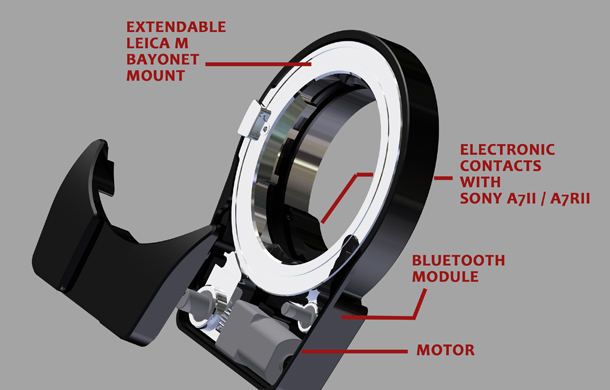
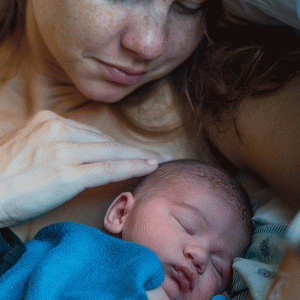
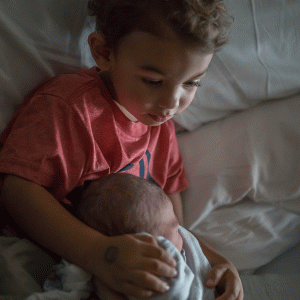

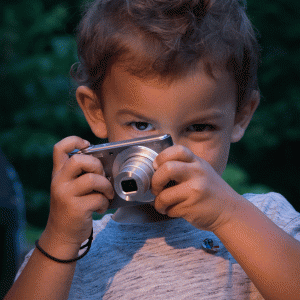


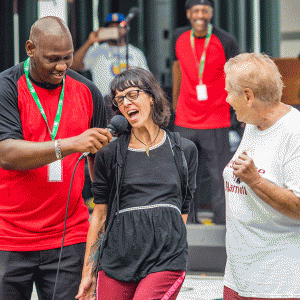

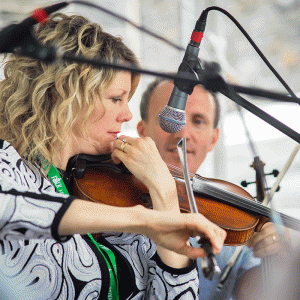
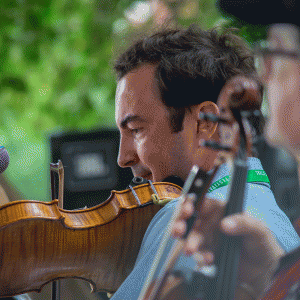
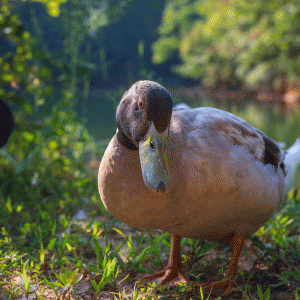
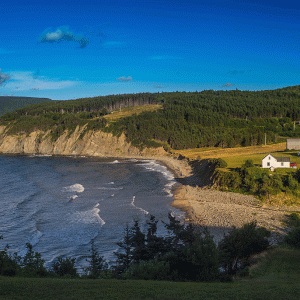
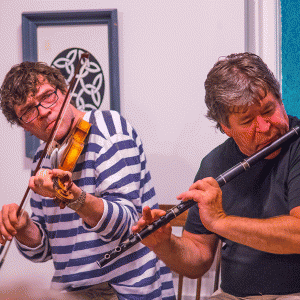
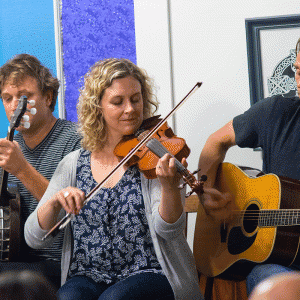

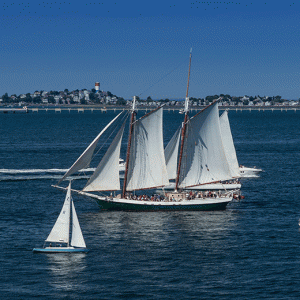


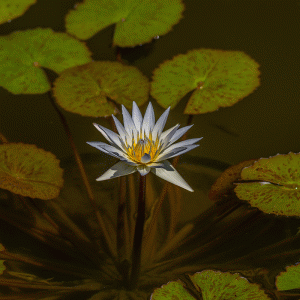
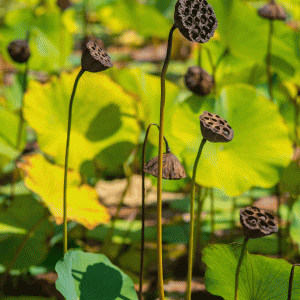
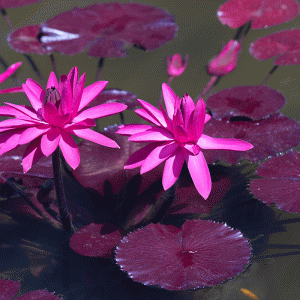

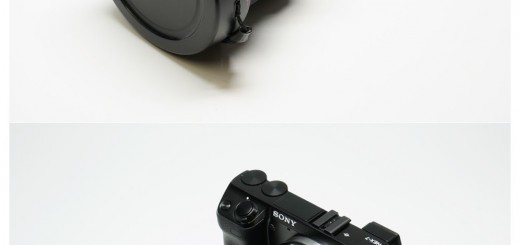
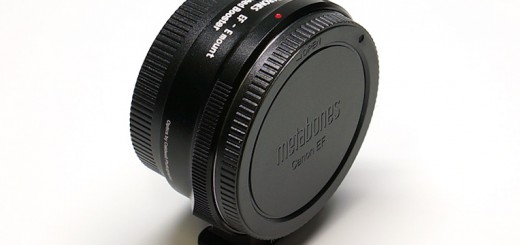
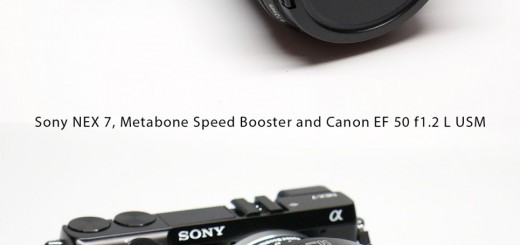











Great review!
I wanted to grab one of these for street shooting with some old Konica lenses. Is the focus speed fast enough for candid street work? Judging from the pictures it seems like it is.
I’m leery about the long term build quality of this thing though. I had a Techart EF-NEX adapter and various pieces of it broke in short order. It was a shame because it worked pretty well. I’m still very interested in this though…. this with the Konica 40 1.8 or Nokton 40 1.4 would be a killer street setup for me.
I have not tested it with my Hexanon 40mm f1.8 yet, but I would guess that for most street shooting, it would be fine. The key issue with most street shots is speed of focus, not stopping action – and with a short focal length lens, it should be fast (under 1/2 second).
As for durability, that is always a guess. I’ve owned it for almost 6 months and it’s bounced around on the camera and in my bag. I purchased a Square Trade extended “drops and spills” warranty in case it fails.
Mordi
Thanks for the good review.
I also have the Techart Pro adapter and have been trying to battle the following:
1. I have to set exposure compensation to -1.5 to -2.0eV most of the time with the adapter. In the camera I always set the aperture to wide open, yet the brightness of shots taken vs on live view / EVF is always approx that -2eV difference. Any ideas why?
2. I use Flexible Spot-M for focusing usually and as soon as I put the focusing dot off from the center 16 or so dots, it can’t focus. So effectively it can only focus on approx 10% (central) of the frame. Is this what you see also?
Also – No matter the native maximum aperture of the lens, make sure your camera aperture is set for F2 – it should be in red font as you dial down from the programming F number ti F2 (say, F25 for a 50mm, take a programming shot, then dial back from F25 to F2. That’s part of the TechArt programming, and violating that will, for sure, screw up your exposure.
If you have your camera set up properly, when you adjust the manual lens aperture, the EVF image will remain constant – only the shutter speed will change.
(You aren’t using auto-ISO are you? I never do, so that could be a confounding issue – don’t know)
1. You haven’t mentioned either the camera model or the lens. However, make sure you have the camera in the “A” (aperture) mode. Next, go to menu “gear” icon, submenu 3 and turn Live View Display to “Setting Effect On”, Disp (lay) cont (inuous) AF area “on” and Phase Detect(ion) Area “on.” If the Live View is not set that way, for sure the EVF will be off.
2. Yes, I cannot use the flexible spot mode either. Last night, I was shooting the Hillary Clinton rally and used the spot focus on her (or another subject) pressed the shutter release, and held it down while I reframed the image. Worked perfectly. Will upload some images later today/tonight.
Thank you for this review: I found it helpful and enjoyed your photos as well.
Glad you found it helpful – and that you liked the photos. I’ve been using The TechArt during extensively during the past 2 weeks, from covering a Hillary Clinton rally with the FD 135 to scenics in Colorado with a CV 15mm III to closeups of a new grandson with an 85mm f2 AiS – and it was really great!
Hi, Thank you for the review. It’s now 2018.
I have the TechArt pro, firmware 6.0 on my A7RIII.
Unfortunately, all shots with my soft portrait lenses (Helios 40 85mm f:1.5, Helios 44 58mm f:2, Pentax SMC 50mm f:1.4) are no good. The focus plane ends at the tips of the eye lashes, iris is out of focus.
On the 85mm, can not focus other than in the center third of the frame @ f2.8. @f1.5, only the actual center will lock focus.